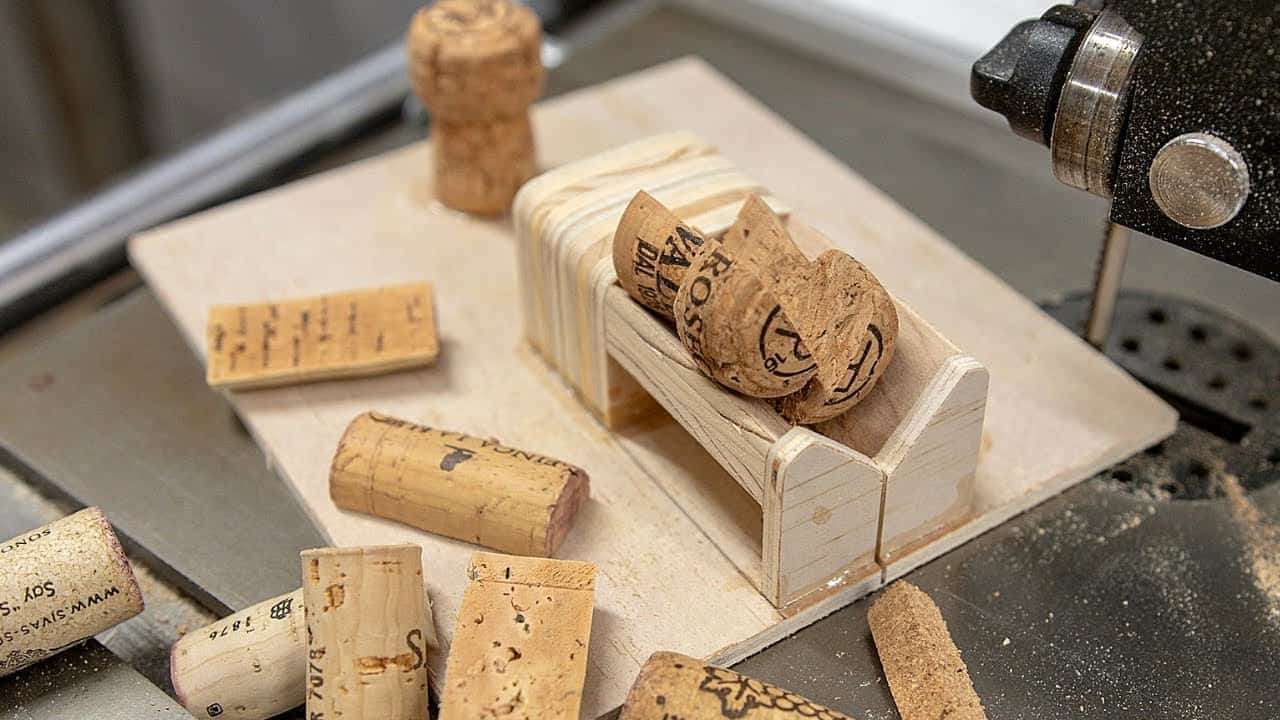Jodee from Inspire Woodcraft shared the woodworking tip featured in this video.
This short video demonstrates a simple, shop-made bandsaw jig designed to split corks in half cleanly and quickly. The idea is approachable for hobbyists and uses common scrap plywood and a little CA glue to make a handy, repeatable sled for the bandsaw.
Watch the full video and subscribe to Inspire Woodcraft:
Design and Purpose
The jig is essentially a V-shaped cradle made from paired plywood pieces that self-centers a cork at a 45° angle for the bandsaw blade to slice downward. This geometry keeps the cork steady during the cut and makes it easy to produce consistent halves for decorative work or other small projects.
Construction Approach
The build leans on shop scraps such as half‑inch, quarter‑inch, and thicker plywood to form the V, a backing guard, and a small relief notch for extraction. Jodee bonds the pieces with CA glue—using thicker glue where gap-filling is needed and a medium bead plus accelerator for quick tack and added strength—then sands and rounds edges for a tidy, durable jig.
Techniques and Tools
The bandsaw is the primary tool for the cut, with a flush‑cut saw and belt sander used for fine trimming and alignment after glue‑up. The approach favors speed and practicality over precision measurement, relying on test fitting the longest corks and leaving a little extra room so parts can be inserted and removed easily.
Using the Jig & Common Pitfalls
In use, the cork drops into the V and the downward-cutting blade keeps it pressed into the channel so the cut stays centered and stable. A key caution is not to push the sled so far that the blade severs the back stop completely, because the two halves can collapse and bind on the blade; learning the correct stopping point or feeding all the way through and retrieving from the other side solves that problem.
Adapting the Idea
The same concept translates to splitting other small, round stock or making a cradle for different diameters by altering the V angle and contact surfaces. For makers without a bandsaw, the video also mentions softer‑cork options—such as briefly softening corks—allowing hand tools like a serrated knife to be a viable alternative for small batches.
Why This Tip Matters
This jig is a quick, low-cost solution that showcases how modest shop skills and recycled materials can solve a specific layout problem. The method is adaptable, teaches useful glue‑up and jig‑making techniques, and reduces time spent on repetitive small cuts.
Support Jodee by visiting his online store here: https://inspirewoodcraft.com/collections/all.
